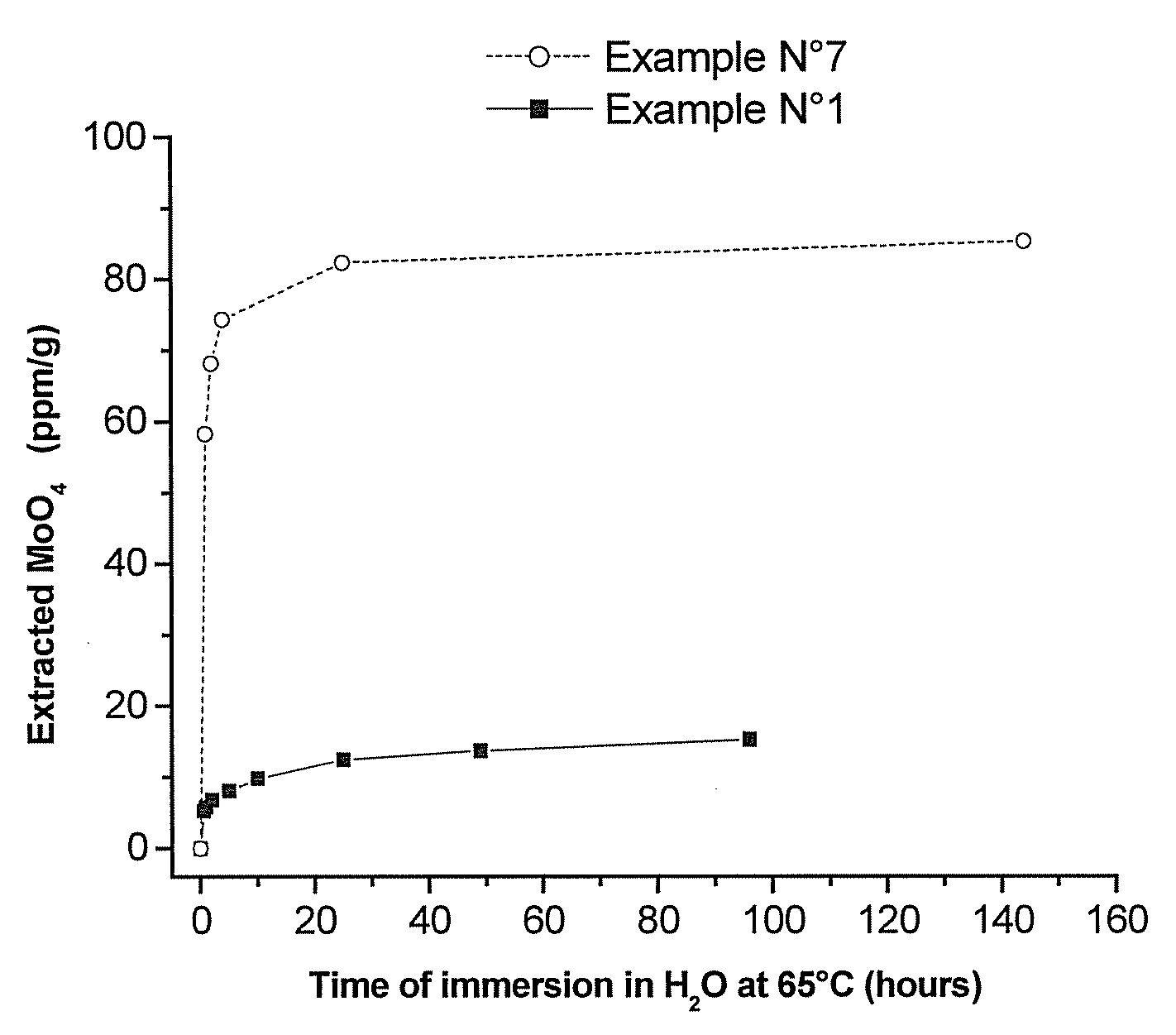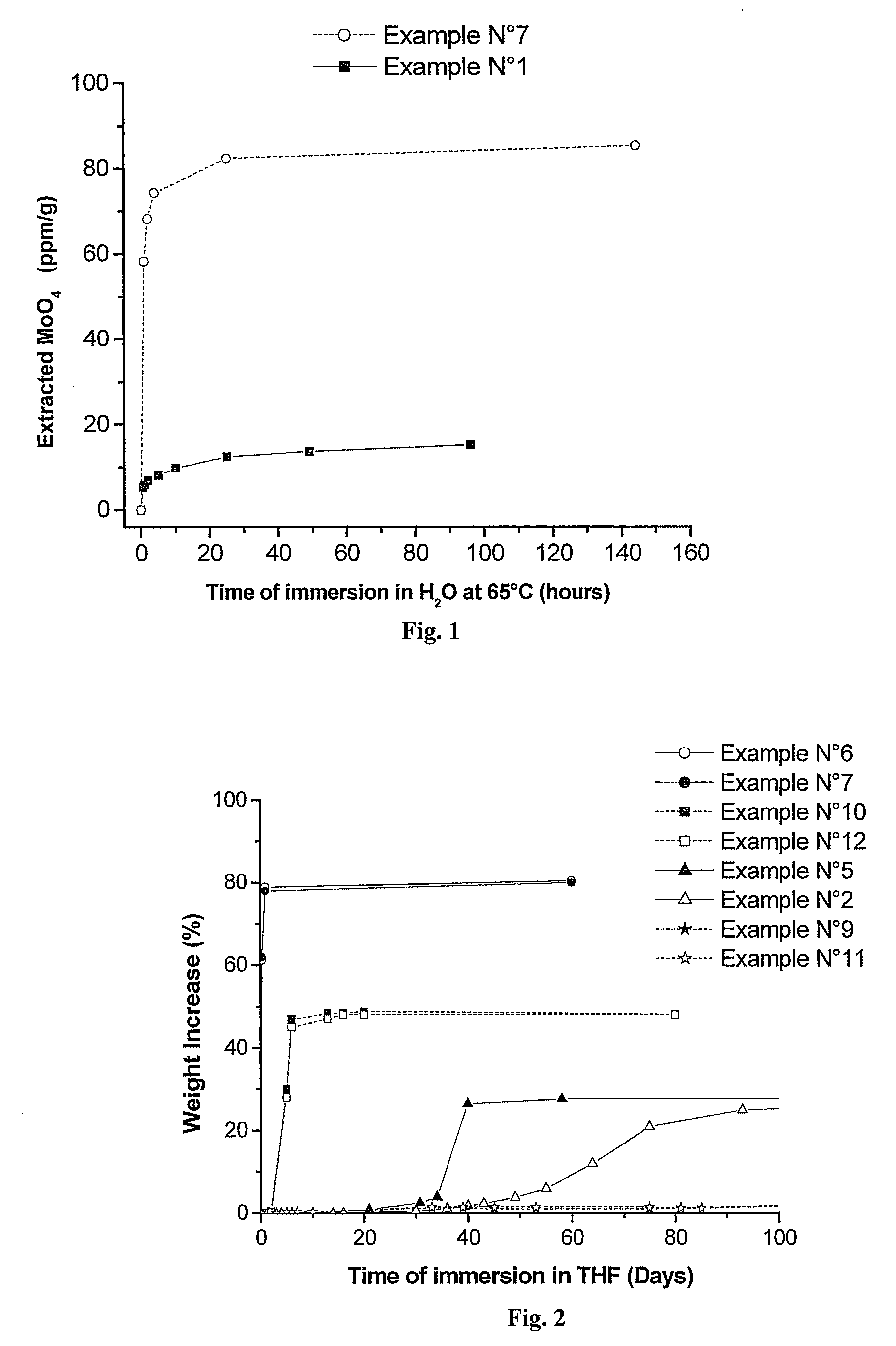Polymeric Compositions With Modified Siloxane Networks, Corresponding Production And Uses Thereof
a technology of siloxane network and polymer composition, which is applied in the direction of organic chemistry, group 4/14 element organic compounds, coatings, etc., can solve the problems of corrosion inhibitors being rapidly released in the environment without use, and reducing the service life of the entire coating system. , to achieve the effect of excellent hardness, fast curing, and good corrosion resistan
- Summary
- Abstract
- Description
- Claims
- Application Information
AI Technical Summary
Benefits of technology
Problems solved by technology
Method used
Image
Examples
example 1
[0102] A resin blend (solution 1) was prepared by combining 9 g of DER 331, 1 gram of DER 669 and 1.8 g of the coupling agent A1170. After mixing the ingredients for 15 minutes, in a glass tube with a magnetic stirrer at 60° C., the solution was mixed with 7.8 g of TEOS and cooled at room temperature. In a another glass tube 0.9 gram of finely ground ammonium molybdate were dissolved in 1.35 g of water, by mixing at 60° C. for 30 minutes, and added, while stirring, to a solution containing 1.93 g of PACM, 5.2 g of ethanol and 0.05 g of DBTDL (solution 2). Solutions 1 and 2 were mixed at room temperature and stirred until the solution became transparent and than was cast on a Teflon mould for curing.
example 2
[0103] Same ingredients and procedure described in Example 1 were repeated, except that 0.45 g instead of 0.9 g of finely ground ammonium molybdate were used.
example 3
[0104] A resin blend (solution 1) was prepared by combining 10 g of DER 331 and 1.8 g of the coupling agent A1170. After mixing the ingredients for 15 minutes, in a glass tube with a magnetic stirrer at 60° C., the solution was mixed with 7.8 g of TEOS and cooled at room temperature. In a another glass tube 0.17 g of finely ground boric acid were dissolved in 1.35 g of water, by mixing at 60° C. for 30 minutes, and added, while stirring, to a solution containing 1.93 g of PACM, 5.2 g of ethanol and 0.05 g of DBTDL (solution 2). Solutions 1 and 2 were mixed at room temperature and stirred until the solution became transparent and than was cast on a Teflon mould for curing.
PUM
| Property | Measurement | Unit |
|---|---|---|
| temperature | aaaaa | aaaaa |
| temperature | aaaaa | aaaaa |
| temperature | aaaaa | aaaaa |
Abstract
Description
Claims
Application Information
 Login to View More
Login to View More - R&D
- Intellectual Property
- Life Sciences
- Materials
- Tech Scout
- Unparalleled Data Quality
- Higher Quality Content
- 60% Fewer Hallucinations
Browse by: Latest US Patents, China's latest patents, Technical Efficacy Thesaurus, Application Domain, Technology Topic, Popular Technical Reports.
© 2025 PatSnap. All rights reserved.Legal|Privacy policy|Modern Slavery Act Transparency Statement|Sitemap|About US| Contact US: help@patsnap.com


